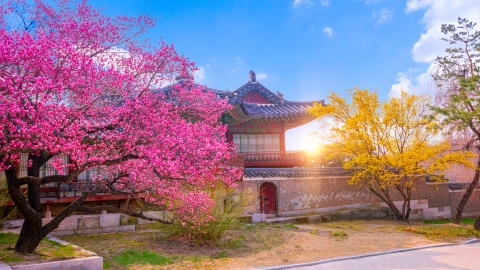Every spring, when Tet comes, the image of bright red lucky money envelopes becomes familiar in every Vietnamese family. But have you ever stopped to ponder the profound meaning hidden in those small envelopes? They are not simply envelopes containing money, but also a blessing, a bridge of affection between family members, a symbol of luck, fortune and prosperity in the new year.
Cultural features of giving fortune
Lucky money, also known as New Year's money, is a traditional custom with special meaning during the Lunar New Year in many Asian countries. This is the act of giving small red envelopes containing lucky money, symbolizing wealth, luck and good wishes for the new year. Lucky money envelopes with bright red color, the color of prosperity and happiness, are not only a hand-to-hand item but also a message of love, wishing for a peaceful and prosperous new year.
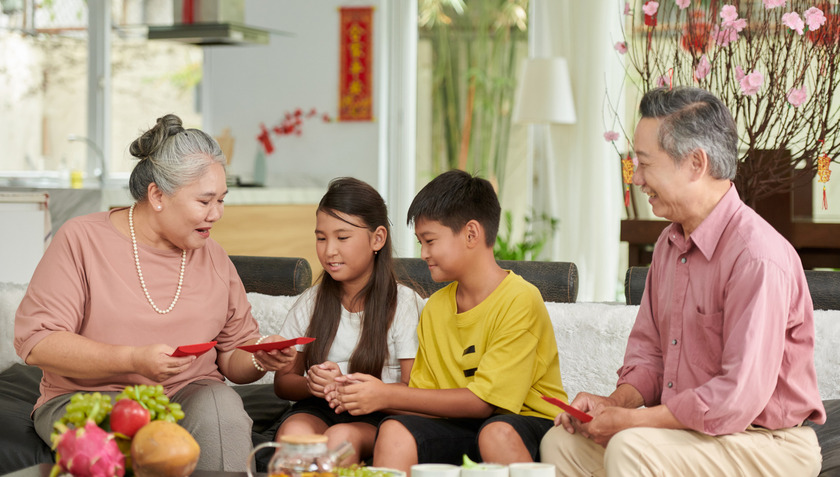
The custom of giving lucky money at the beginning of the year is not only a unique cultural beauty of Vietnam but also popular in many Asian countries.
The custom of giving lucky money to the New Year has long been an indispensable cultural feature in many Asian countries, especially Vietnam. The bright red envelopes not only contain money but also contain good wishes for the New Year, praying for a new year full of luck, health and prosperity.
For children, lucky money is a joyful excitement when receiving "new year's luck", and for the elderly, it is gratitude and respect from children and grandchildren. This custom not only connects family members but also spreads sharing and solidarity in the community.
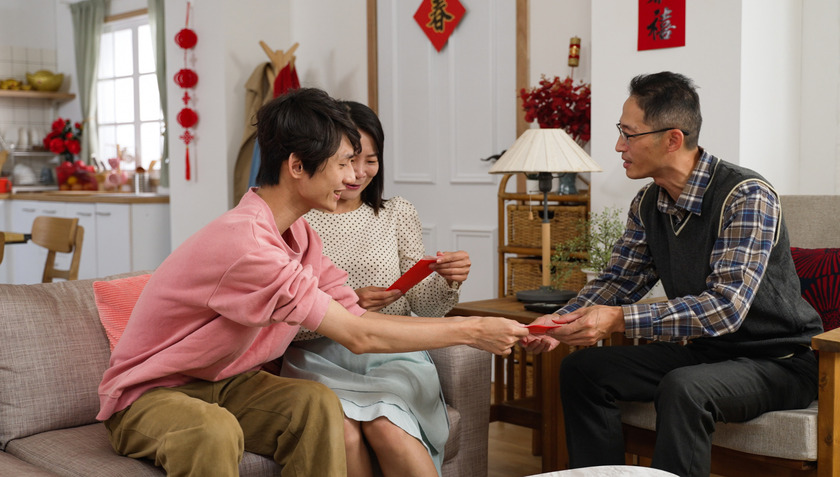
Although they share the same meaning of bringing luck and fortune in the new year, the ways of giving lucky money and wishes are extremely diverse.
Each lucky money envelope, no matter big or small, is a sincere message, as people give each other the best things to start the new year full of hope.
Customs vary from country to country
China, the land of magical fairy tales, is also the origin of the custom of giving lucky money - red envelopes. Legend has it that on New Year's Eve, a mischievous monster often appears to tease sleeping children. Seeing this, on New Year's Eve in a family with a young son, 8 fairies transformed into coins, for the boy's parents to put in a red bag placed at the head of the bed. When the monsters arrived, the coins flashed, scaring them away.
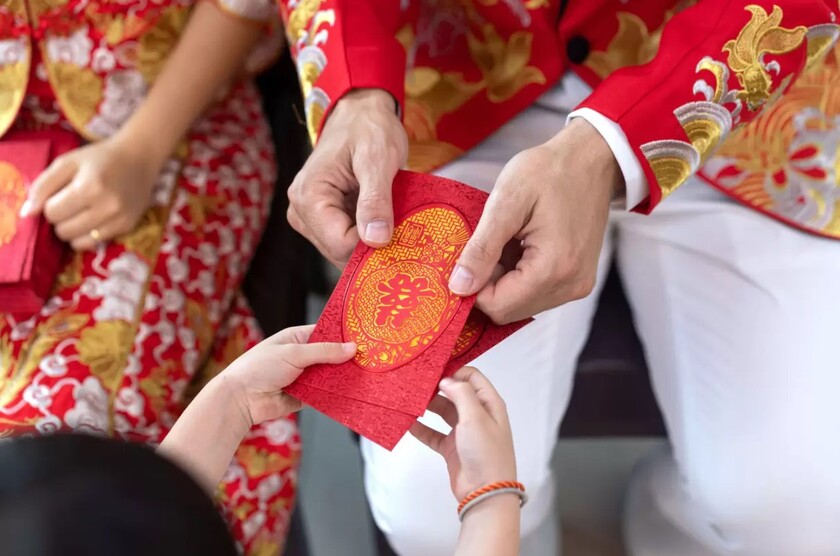
The Chinese have certain rules when giving red envelopes. For example, only new, clean bills are allowed in red envelopes.
Since then, people have put small change in red envelopes, the color symbolizing luck, and given them to children on New Year's Day to bring good luck and ward off bad luck. The red color of the envelope symbolizes luck, prosperity and life. Giving lucky money is not only an act of material exchange but also a way for adults to express their love and care for children. Through this, people hope to bring children a peaceful, happy and successful new year.
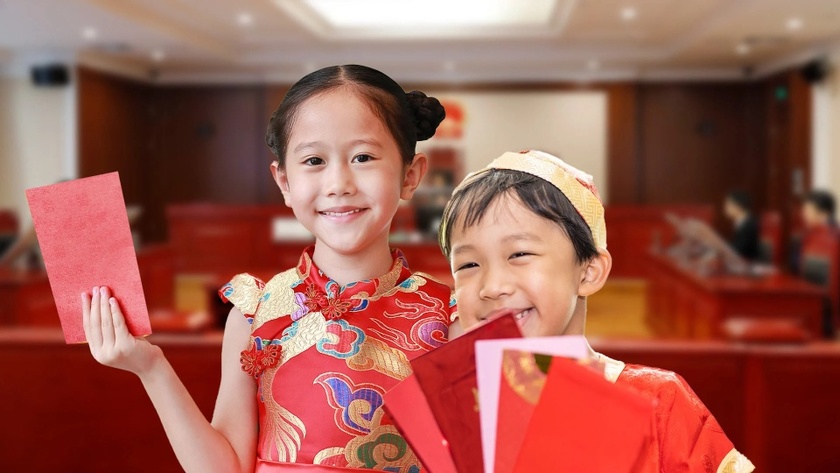
Traditionally, children would kneel to receive red envelopes from older family members. This custom is still practiced in some parts of China.
Lucky money is a beautiful traditional cultural feature of Vietnamese people, showing the care and love of adults for children. Vietnamese people have a tradition of meeting and visiting family and friends. On this occasion, the elderly will give lucky money to children, usually in colorful red envelopes. There is a folk saying "green green red red, the children are happy", for children, those colorful lucky money are like a miracle, bringing endless joy. The name "lucky money" reflects the meaning of lucky money in Vietnam: with wishes for children to be one year older, more obedient, healthy and happier.
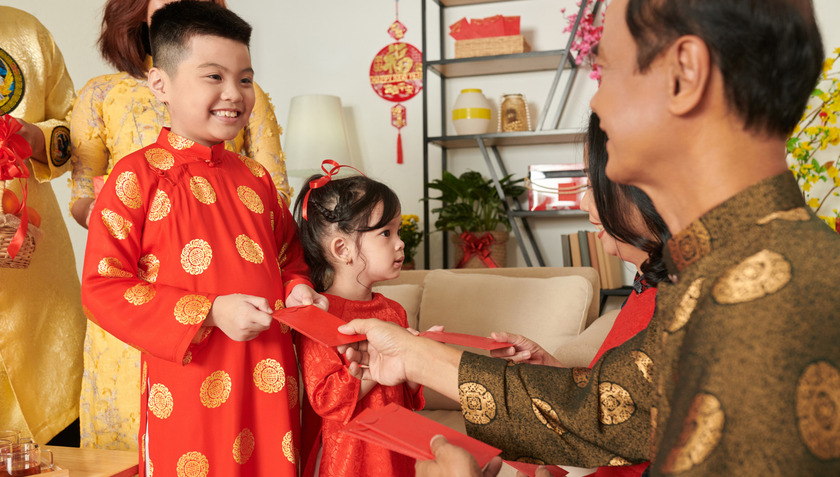
Lucky money envelopes on Tet holiday are not only a gift symbolizing luck but also carry a deep meaning of discretion and equality.
In Japan, lucky money is called "Otoshidama", according to Japanese beliefs, Otoshidama is given to children with the wish that they will have a new year full of joy and luck. These lucky money envelopes are often meticulously decorated with traditional motifs such as cherry blossoms, Mount Fuji, or animals symbolizing luck.

According to ancient Japanese documents, "Otoshidama" originated from the concept that on the first days of the new year, ancestral spirits from the mountains will return to the family and bring good things and luck to the family.
When opening the red envelope, children will find brand new money and meaningful wishes from relatives. Otoshidama is not just lucky money but also a symbol of connection between generations, a blessing from adults to children, showing the traditional and cultural values of the people of the cherry blossom country. The Japanese also consider the value of lucky money to be something discreet and private. Therefore, the envelope is sealed and children do not open the lucky money in front of the giver, and only receive lucky money from people who are really close. There is an age limit for the recipient of lucky money. People over 20 years old usually do not receive lucky money anymore.

The meaning of giving lucky money on New Year's Day to children in Japan is to wish that in the new year the children will be older and achieve more success in their studies.
In Korea, red envelopes are called "Sebae-don", and on Seollal, after greeting their grandparents and parents, children receive colorful Sebae-don red envelopes. These envelopes are often meticulously decorated with traditional motifs, and inside are brand new bills and good wishes.

Sebae don, or lucky money, is a red envelope given to children after they complete the Sebae ritual. It is a reward that symbolizes good wishes and luck for the children in the new year.
Sebae-don is not just a lucky money, but also a symbol of respect and gratitude to elders. Giving and receiving Sebae-don is an important ritual during the New Year, helping to strengthen family ties. Through receiving Sebae-don, Korean children are educated about politeness, gratitude and the meaning of sharing.
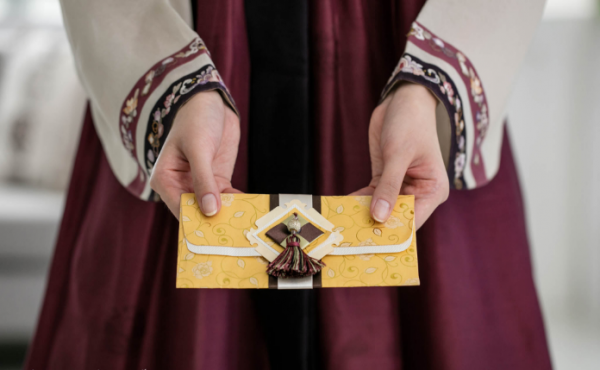
Lucky money envelopes in Korea come in many different colors, sometimes in bags like this one. Lucky money gifts can be cash or gold or precious stones.
The custom of giving lucky money, also known as “Ang Pao”, is an indispensable part of the Lunar New Year in Malaysia, especially among the Chinese community, which makes up the majority of the population. Red envelopes not only symbolize luck and fortune, but also a manifestation of unity and love within the family and community. What is special is that the amount of money in the envelope must be an even number, because Malaysians believe that even numbers symbolize fullness and prosperity.
The custom of giving lucky money to the Lunar New Year is not only the act of exchanging red envelopes but also carries profound spiritual values, expressing family and community ties and the hope for a peaceful new year. From Vietnam to Asian countries, each place has its own unique characteristics in this custom, but in general, it is the spirit of sharing, blessing and spreading love.





























